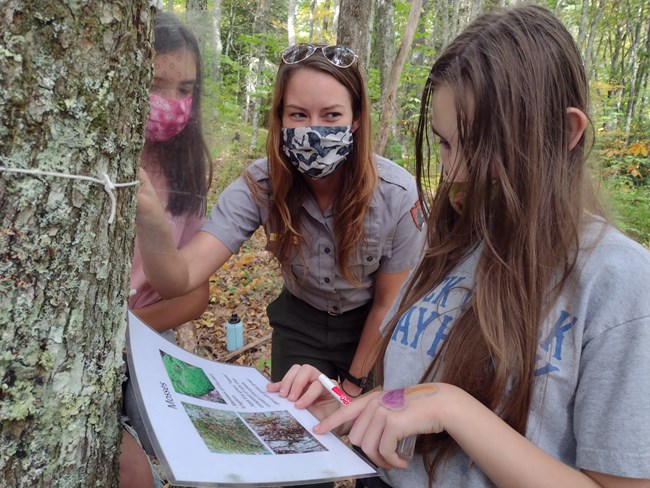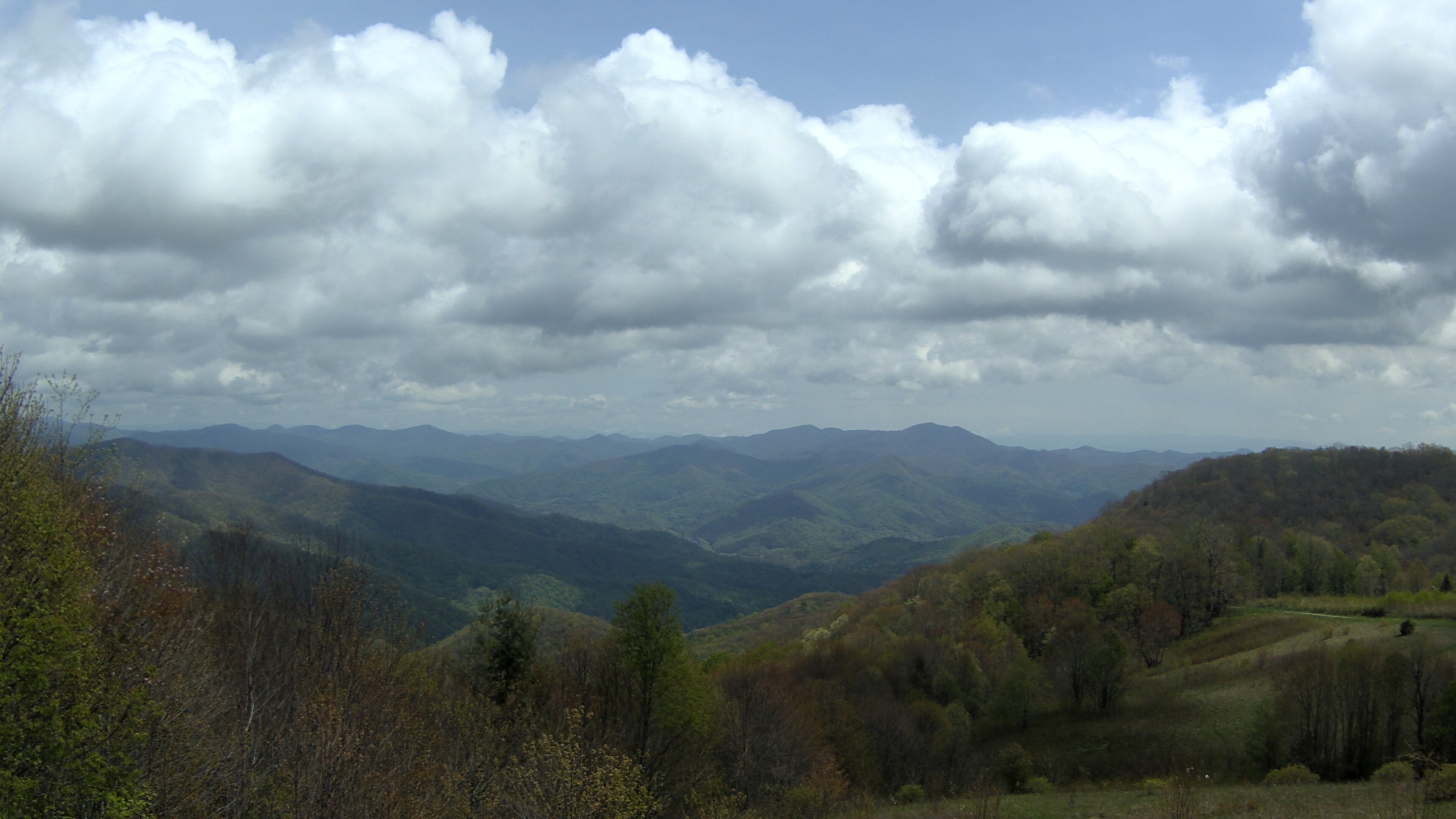
Focus On Air Quality
Students visit an ozone bio-monitoring garden, located at the Purchase Knob Field Station, that has been planted with species sensitive to ground-level ozone. Students develop and use estimation techniques to determine the amount of damage on leaves of the plants.
In another activity, students participate in a lichen monitoring study, collecting data on the type and amount of sulfur sensitive lichen they observe on specific trees.
Once back in the classroom, students analyze their data that has been entered into two websites. Follow these links for more information on the ozone bio-monitoring study and the lichen monitoring project.
School programs are geared towards: Grade 7, High School Biology, Chemistry, Earth Science, AP Biology, and AP Chemistry

Focus on Scientific Method and Aquatic Biology
Students work their way through the scientific method as they collect data on two long-term monitoring projects. One group of students will go to a creek to collect water quality data and recapture information for a salamander mark and recapture study. The other group of students will visit a permanent monitoring plot to sample for spiders using a variety of exciting techniques. Data is taken back to the classroom where students analyze it to create a scientific paper. Follow this link to view data collected on the salamander mark/recapture study.
Additional programs are available on topics such as tardigrades, tree phenology and climate change. For more information, see the Park's ranger-led field trip webpages for middle school and high school.

Focus on Soil Health
Students study soils, the associated soils food chain and threats to this system during their field experience. Using a detailed data sheet, students work in small groups to analyze soil properties. In addition, students use a variety of techniques to do an inventory of soil macro-invertebrates. A special attempt is made to search out abandoned snail shells as part of an on-going inventory to monitor their populations. Snail numbers are of concern to scientists because of diminishing levels of calcium in soil resulting from acid deposition. All data collected is posted on the internet via an on-line database. Follow this link to see the soil macroinvertebrate study.This program is for Grade 6, High School Biology, Earth Science, AP Biology, and AP Chemistry.
Appalachian Highlands Science Learning Center Live Air Quality Camera
Catch live updates of the AHSLC webcam.
View WebcamLast updated: August 22, 2025

